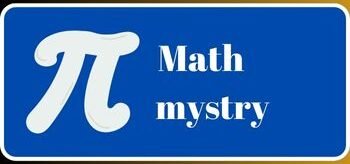Currently Empty: $0.00
Ever looked at a math problem and felt like you were trying to read alien code?
You’re not alone.
But what if math didn’t have to feel so mysterious? What if it unfolded like a story, came alive as an image, or took you on a journey?
That’s the magic of visual learning in math—it turns abstract confusion into visual clarity. In this post, we’ll explore some of the most effective visual tools that make even the toughest math topics surprisingly simple.
Because sometimes, the scenic route really is the fastest way to understanding.
Why Visual Math Works Wonders
Our brains are wired for visuals—they process images up to 60,000 times faster than text. A single graph or diagram can explain what pages of equations struggle to convey.
Whether you’re a student, educator, or someone just trying to “get” math, visuals can be your most powerful ally.
Number Line: Math in Motion
Great for: Negative numbers, fractions, and simple operations
The number line brings math to life by turning numbers into movement.
- Subtracting a negative? Move right.
- Comparing fractions? It’s easy to see that ½ is bigger than ¼.
Try using interactive number lines like those on Desmos to bring it to life.
Area Model: Making Multiplication Visual
Great for: Algebra and factoring
Ever wondered why(x + 2)(x + 3) = x² + 5x + 6?
Area models break down algebraic expressions into visual blocks, so the “why” becomes obvious.
Unit Circle: Trigonometry That Makes Sense
Great for: Sine, cosine, tangent
Ditch the memorization—start visualizing.
cos(θ)= x-coordinatesin(θ)= y-coordinatetan(θ)= slope
Use GeoGebra to rotate angles and watch trig functions evolve in real time.
Pascal’s Triangle: Order in Chaos
Great for: Combinations, binomial expansion, and probability
This triangular arrangement reveals stunning patterns:
- Every number is the sum of the two above it
- Each row = coefficients for
(x + y)^n
It’s where symmetry, logic, and beauty meet.
Graphing Functions: Calculus in Color
Great for: Derivatives, integrals, and limits
Graphs aren’t just curves—they’re dynamic stories.
- Derivative = rate of change
- Integral = accumulated value
Interactive tools like Desmos or Wolfram Alpha let you explore these stories in real time.
Möbius Strip: The Shape That Defies Logic
Great for: Topology and infinity concepts
Take a paper strip, twist it once, and tape it—and voilà!
- One surface
- One edge
- Cut it and… surprises await
It’s a hands-on way to explore the strange but tangible side of math.
Mandelbrot Set: Infinite Art from One Formula
Great for: Fractals and complex numbers
The equation zₙ₊₁ = zₙ² + c leads to infinite self-replicating beauty.
Zoom in forever, and patterns keep reappearing. Proof that math isn’t just logical—it’s artistic.
Graph Theory: The Bridges That Changed Everything
Great for: Networks and paths
Can you cross all seven bridges of Königsberg once without repeating?
Spoiler: You can’t.
But this puzzle gave birth to graph theory—the math behind GPS, internet networks, and social media.
Tips for Learning with Visuals
- Sketch your diagrams—drawing helps reinforce what you’re learning.
- Use interactive tools—platforms like GeoGebra and Desmos turn static math into moving insights.
- Relate to the real world— From fractals in nature to graphs on your fitness app, math is everywhere.
Final Thought: Math Is a Visual Language of Patterns
The best math visuals don’t just explain—they inspire. From the elegance of Pascal’s Triangle to the mesmerizing depth of the Mandelbrot Set, visual math helps concepts click in ways symbols alone never could.
Which visual tool helped you finally “get” math? Have a favorite? Share it in the comments!
Would you like a blog-style layout or a social media post version of this, too?

Asma
Good work